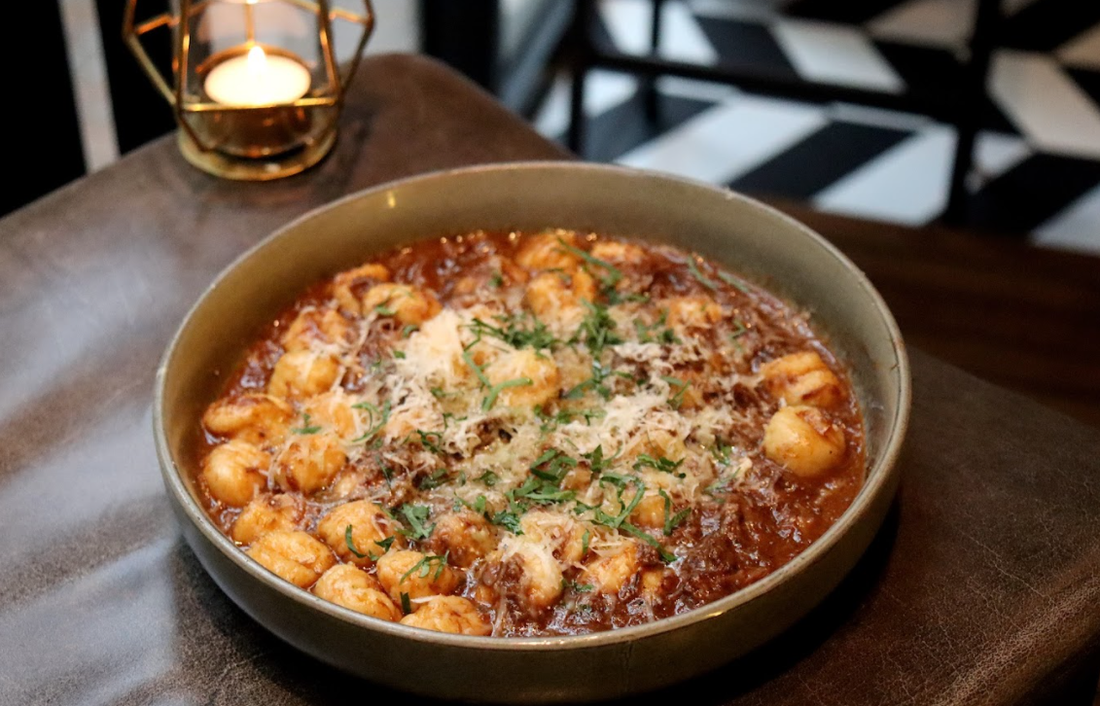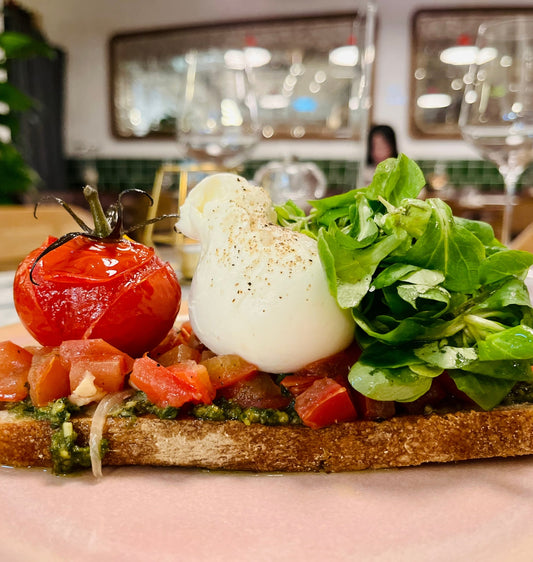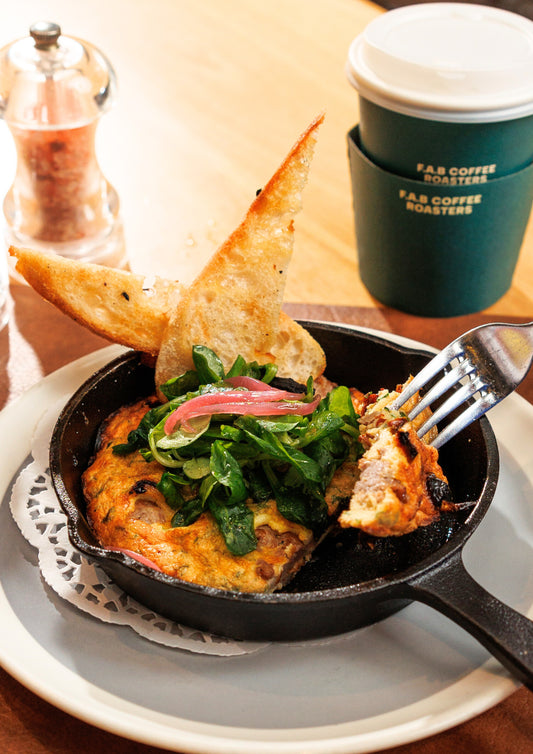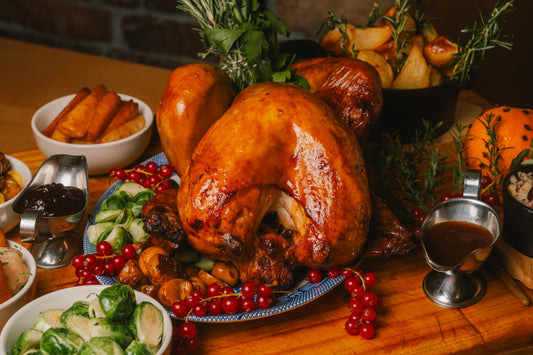
Chef Doug's Braised Beef Cheeks
Wagyu Beef Cheeks cooked low and slow are the stuff dreams are made of. Grab all the ingredients then follow our chef's detailed steps for guaranteed success.
‘Nose to Tail’ is a bit of a culinary buzzword these days, but it’s one that encompasses so many noble pursuits. An inordinate amount of energy, effort and resources go into raising cattle and moving it from its farm to, well eventually, your stomach. And in respect of that effort, it behoves us to waste as little of the beast as possible, to use everything from the ‘nose’ to the tail’, and so we’ll start very close to the beginning of that journey, with the cheeks!
There’s no martyrdom in eating beef cheeks. Nobody’s just using up the cheeks so that they can in good conscience enjoy the tenderloin that they really wanted. Cheeks are a stand-alone, fantastically flavoursome cut in their own right.
When we think about flavour in beef, there are actually many ways to get there. You’ve heard the adage ‘fat equals flavour’, and so yes, if you order a liberally marbled rib-eye, you’re in for some flavour. But cuts with a large amount of connective tissue like shins and ribs, collagen-rich cuts like chuck or beef shoulder, or cuts with plenty of bone marrow like shank also make for some downright delicious dishes.
The category we’re working with today though, is hard-working muscles. As a muscle works, compounds develop in the meat that bring an array of rich, savoury characters. When you think about work, usually load-bearing and locomotor muscles (the ones used for walking) come to mind, so cuts of steak such as chuck, brisket, shank, plate, flank, and round. But if there’s one thing cows never stop doing, it’s chewing. All damn day their jaws are in motion like a naughty high schooler with a pack of gum. The muscles for chewing? Tongue and cheek.
Yes, all this work makes for a mighty tough cut of meat. Whack a beef cheek on the grill and you’ll be chewing as much as the cow did. But with the right recipes - in this case, low, slow and wet, we’re in for something amazing.
Braised Beef Cheeks - The Recipe
Ingredients
1 onion
1 carrot
1 leek
4 tbsp sunflower oil
2 tbsp butter
3 beef cheeks (about 1.5kg), trimmed and halved (reserve trim for sauce)
8 tbsp plain flour
Flaky sea salt
Black pepper
1½ tbsp tomato purée
1 bottle of dry red wine (go for Three Butchers Shiraz and serve alongside as well)
1L beef stock
400g canned tomatoes
4 cloves of garlic, crushed
2 dried bay leaves
½ a bunch of thyme
½ a bunch of rosemary
1kg frozen gnocchi
100g butter, cubed
1 bunch of parsley, chopped
100g Grana Padano, grated + extra to serve
100ml your very best extra virgin olive oil to serve
Method
Roast the veg and beef trim
Roughly chop the carrot, onion and leek, two or three centimetre dice is fine. Melt half the butter in a deep baking tray in the oven. Remove from the oven, add half the oil, all the veg, the bits you trimmed from the beef cheeks, salt and pepper and toss well. Roast at 200℃ for 30 minutes, until deep golden brown.
Brown the cheeks
In a large flat bowl mix the flour with a large pinch each of salt and pepper. Pat each cheek dry with a clean kitchen towel then lay them into the flour, turn over to coat on both sides then shake the remaining flour back into the bowl. Heat the rest of the oil and butter in a large, heavy-bottomed Dutch oven or cooking pot, and brown the cheeks aggressively. This means laying them in the pan over medium-high heat until they are very dark brown, flip and brown on the other side. You will need to do this in batches, then set them all aside.
Prepare the braising liquor
In the same pan, without removing anything (all that browned goodness is just more flavour) add the tomato purée and garlic and stir over medium-high heat for about 2 minutes. Add the vegetables and beef trim, herbs and red wine. Stir, scraping the bottom of the pot (a flat-ended wooden spatula is ideal for this task) and bring up to a hard boil. Boil until the volume has reduced by half, add the beef stock and continue to boil until the volume has reduced by half again. Pour everything through a fine sieve into a clean pot. Press with a ladle to extract every precious drop, then add the beef cheeks.
The ‘low and slow’ part
At this point, you could transfer everything to vacuum bags and cook sous vide in a water bath at 80℃ for 12 hours. Or you can add the lid to the pot and cook over low heat for four hours.
Make the sauce
Once the cheeks are totally tender, remove them from the pan and set aside somewhere warm. Assess the consistency of the sauce, it may be perfect, or it may be too runny, in which case, turn up the heat to medium-high and reduce to your desired thickness.
Prepare the gnocchi
Dissolve a handful of cheap salt in your largest pot of water. Taste the water. Add more salt until it tastes like seawater. You’ll be amazed how much salt you need to add, but it makes all the difference. Bring that water to a hard boil, empty in the packets of gnocchi, give them a quick swirl around then put the lid back on to help the water return to the boil as fast as possible. Boil for 2-3 minutes if using ‘Passion Pasta’ gnocchi. Otherwise, follow the instructions on your packet, but boil for one minute less than recommended. Drain and toss gently in the colander to make sure they are completely dry.



